Pickering airport? Time to hit reset
- Like
- Digg
- Del
- Tumblr
- VKontakte
- Buffer
- Love This
- Odnoklassniki
- Meneame
- Blogger
- Amazon
- Yahoo Mail
- Gmail
- AOL
- Newsvine
- HackerNews
- Evernote
- MySpace
- Mail.ru
- Viadeo
- Line
- Comments
- Yummly
- SMS
- Viber
- Telegram
- Subscribe
- Skype
- Facebook Messenger
- Kakao
- LiveJournal
- Yammer
- Edgar
- Fintel
- Mix
- Instapaper
- Copy Link
Posted: 1 March 2017 | Mary Delaney | Land Over Landings | 12 comments
Does Toronto need another airport? Would Pickering alleviate traffic pressure? Here’s an argument against the building of Toronto Pickering…
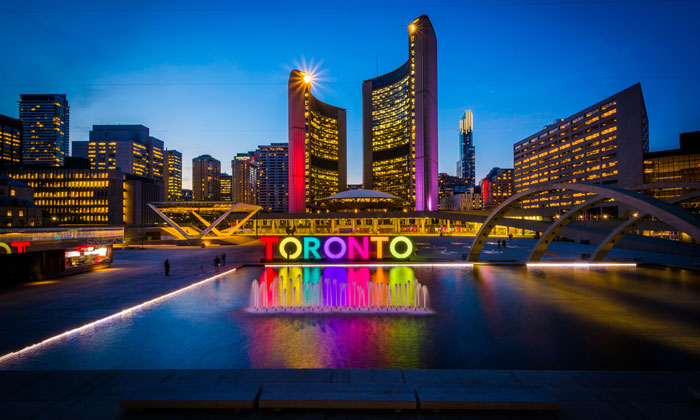

In response to International Airport Review‘s previous consideration: ‘Does Toronto need another airport?’ We bring you a reaction article from Mary Delaney of Canadian organisation Land Over Landings, who answers with a vehement ‘no’.
March 2 marks the 45th anniversary of the announcement of a new airport for Toronto. How did this plan come about?
The idea originated in the late-1960s, when flying was becoming more accessible to the public. The thinking seems to have been that air travel was heading for a sky’s-the-limit passenger boom. The plan for a major international airport at Pickering, on Toronto’s border, was publicly announced on March 2, 1972. The federal government expropriated for this “public work” 18,600 acres (7,527 hectares) – a total of 815 properties, including 126 working farms, many businesses, and two entire villages. There was no real recourse for those affected. The argument was that the airport was needed, to relieve a looming capacity crisis at Toronto’s main facility. Pickering was scheduled to open by 1979, and some 40-50 million passengers were expected to be using it by 2000.
But the airport wasn’t built. What happened?
Grassroots activism is what happened: inventive, attention-getting antics balanced by dead-serious research. While the attention-getters were keeping the story alive on the front pages and nightly newscasts, the backroom strategists were consulting with experts, amassing data, and developing their arguments.
The argument was that the airport was needed, to relieve a looming capacity crisis at Toronto’s main facility…
They found that the site hadn’t been ideal, despite government assurances. (It had been a last-minute, egregious compromise, born of the participatory democracy of the times, in that nearly everyone had been involved in the site-selection process, getting agreement was impossible, site after site was mooted and rejected, and the final choice became the one that raised the fewest objections – not least because it hadn’t been in the running until the last minute and its inclusion had largely been kept secret.) The strategists also found that Toronto’s existing airport could expand, despite government denials.
They found that Pickering wasn’t needed; passenger forecasts had been wildly inflated. They found that the federal government hadn’t been entirely forthcoming on costs to Ontario, the project’s junior partner and on the hook for the airport’s infrastructure (roads, sewerage). After the grassroots strategists took their arguments to the Ontario government, the two levels of government found themselves at loggerheads. On September 24, 1975, the Ontario Cabinet voted to pull out of the project. The following day, a furious federal government shelved the airport.
That was more than four decades ago. What followed?
What we call “airport by stealth.” Transport Canada held onto the land and rented out some houses and farmland – but all on 1-year leases, the message being that the hiatus would be brief and the airport would be built. Forty-two years later, 1-year leases are still the norm, with disastrous consequences for the whole area.
They found that Pickering wasn’t needed; passenger forecasts had been wildly inflated…
Lessees are still prevented from making repairs or improvements to properties, and are deterred from investing in them. For farmers, only grain-cropping for cash has been feasible in the circumstances. Houses, barns, and outbuildings inevitably deteriorated, were eventually left empty, boarded up, then demolished. There were fewer and fewer residents; businesses closed or moved away. In effect, the site was slowly and deliberately readied for airport construction.
The wider area, blighted by proximity to what are now called the Federal Lands, has become an economic desert: few jobs, no airport on the horizon, no sign of one. Toronto’s air passenger volumes have never reached those feverish predictions of the sixties and seventies. Toronto Pearson International has expanded, can still do so, and is nowhere near capacity. Last year it processed just over 44 million passengers, the number its Pickering reliever was supposed to be handling by 2000. As for any airport’s real limiting factor – aircraft movements – Pearson’s have increased by only 7% since 2000. Yet Transport Canada remains fixated on the 1960s project. The department has commissioned study after study to prove the need for Pickering. All have failed. A new one is currently underway.
Where does Land Over Landings fit into the story?
The original grassroots movement was called People or Planes. But by 2005, there were hardly any people left on the Lands. Pushing the government to return the land to the original owners was pointless by then; too much time had passed and most of the families and their descendants were scattered far and wide.


Keep Canada’s streams clean says Land Over Landings
The farmland remained, though, as well as the many clean streams. So we regrouped and changed our name. Land Over Landings better reflected the new reality – part of which was the inescapable fact that the world was experiencing unparalleled population growth and, simultaneously, massive farmland loss. Which explains our tagline: “Because food is a GROWING concern!”
We also found that putting all our effort into fighting against something was soul-destroying, whereas positivity, successes, and the hope of more successes served to keep people strong, especially when in it for the long haul. We needed to be for something that people could relate to, support, and be inspired by. That “something” was obvious: this vast tract of most-productive (Class 1) farmland on Toronto’s doorstep. Why destroy such a valuable, irreplaceable, natural resource? Why not capitalise on it, turn it into an agricultural powerhouse, a source of safe local food for Canada’s largest urban centre? Our change of focus seemed misguided to some at first. Not sexy. Not particularly interesting. Too soft. But the times were changing. Concerns about global food security were becoming front-page news. We turned out to be prescient, and support for our vision was almost immediate.
Why destroy such a valuable, irreplaceable, natural resource?
We worked with our federal representatives, making the case for preserving the Lands for food production. Our first success came in 2013 (coincident with the government’s re-announcement of the airport plan, but on a smaller scale; the re-announcement, as it happens, went nowhere). That day, a quarter of the expropriated site was protected within Canada’s first national urban park. We increased our efforts and, in 2015, saw a second tranche transferred to the park. Just under half of the original site remains at risk, but we’re convinced that we’ll see it protected too.
Why be so certain of a win?
We’ve mentioned the park, so let’s start there. The Rouge National Urban Park is dedicated to showcasing nature, culture, and agriculture. If a Pickering airport were built, the peace would be constantly shattered by the roar of aircraft overhead; much of the park lies squarely under the approaches of two planned runways. The RNUP is a wildlife sanctuary, as are all our national parks, and its farmers will be transitioning to sustainable, mixed-farming practices – a planet-friendly type of farming that happens to attract birds and other wildlife. Yet airport regulations require hazardous wildlife to be dealt with in ways that ensure aircraft safety. The wildlife hazard zone would cover a broad swath of the park, overriding the park’s protection mandate. It’s impossible to see how this circle can be squared.
In “Does Toronto need another airport?” (Phil Fine’s January 17 interview with York University’s Fred Lazar), Professor Lazar laid out many of the reasons why a Pickering airport isn’t and won’t be necessary. No need to repeat them here, except to add that Toronto Pearson is making plans to become a mega-hub, Canada’s pre-eminent international airport, and is one of a dozen area airports (many of them seriously under-utilised) forming a coalition to handle future air-traffic increases. Pickering isn’t in the equation.
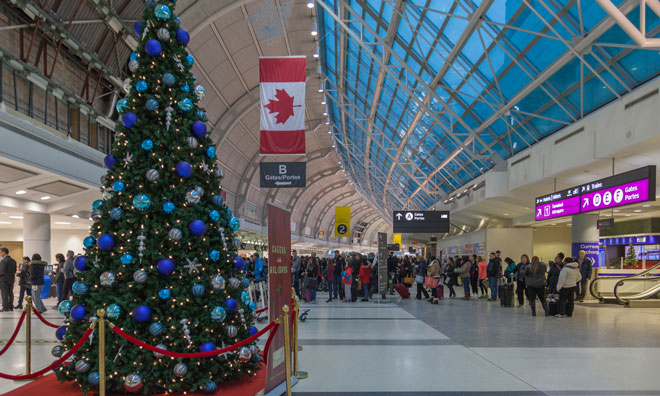

Toronto Pearson features in International Airport Review’s Top 20 World Airports. Click on the link below to find out why…
International Airport Review‘s Top 20 World Airports
But more than anything else, what underlies our thinking is the issue none of us can afford to ignore. Climate change is already upon us. It will affect everything. Writer George Monbiot warned last October, in his article “The Flight of Reason,” that “you cannot build new runways and prevent climate breakdown.” The article’s trigger was the Heathrow third-runway decision, but Monbiot’s arguments are universal.
Climate change is already upon us.
The world has signed onto the Paris Climate Change Accord. If the health and welfare of our children and their children mean anything to us, everyone needs need to face up to the fact that a signature on this document means nothing unless all necessary actions, including unwelcome ones, are undertaken to keep our planet habitable.
In terms of airports, the actions have been slow in coming. But on February 9, 2017, Austria’s Federal Administrative Court rejected an application to expand Vienna-Schwechat Airport, on the grounds that the additional runway would increase CO2 emissions and cause unacceptable loss of agricultural land. The judges cited as the basis for their decision the country’s national and international commitments on climate protection.
Canadian airports themselves already represent an exemplary model for sustainable development…
Whether the plan is to expand an airport or build a new one, the issue is the same: if the aviation sector’s forecasts and growth plans aren’t factoring in climate change and its likely effects, then they are inadequate and irresponsible. Aviation still relies on burning fossil fuels. Flying is a luxury, not a basic human right. The unfettered growth of the sector isn’t guaranteed.
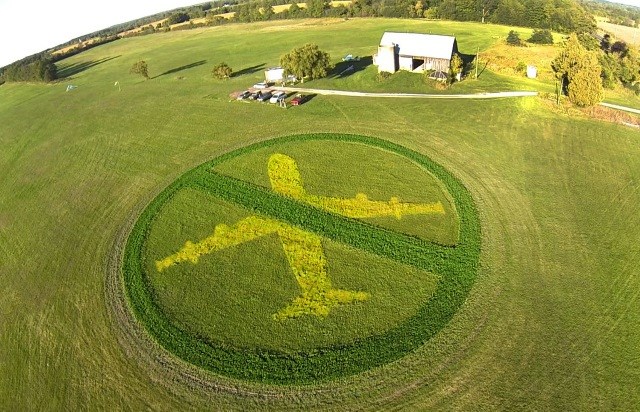

When Pickering airport was first announced 45 years ago, the world’s population stood at 3.8 billion; now it’s almost 7.5 billion and the U.N. is predicting 9.7 billion by 2050. We face unprecedented climate crises in this century – floods, droughts, rising sea levels, mass migrations; many, probably most, will affect food security. The Toronto Food Policy Council has found that the city, in an emergency, would run out of fresh food within three days. (Perhaps the same applies to every large city the world over.) Which is why we’re advocates for the protection of the Federal Lands. It’s why we view the perpetual Pickering airport project as long past its best-before date (if it ever had one). There’s no assurance that today’s global food supply chain will remain reliable as we navigate the unknown future. Protecting sources of fresh local food is becoming a matter of paramount importance.
It’s why we believe that our federal government will come down on the side of an agricultural future for this farmland and will protect the area in perpetuity for the food needs of Toronto and beyond. By turning the Lands into a “public work” at last, the government will at last meet the terms of the Expropriation Act.
So… a Pickering food hub, not a Pickering airport?
Absolutely. We have the rich soil, a temperate climate, reliable rainfall, and a unique opportunity here. At least 200 different kinds of foods can grow in this area. Orchards could be replanted. Farms could start growing vegetables and soft fruits again. There could be livestock and poultry farms, dairies, bakeries, butchers, and food processing facilities. Bistros and restaurants, farm markets and B&Bs, hiking trails connecting with the Park. Farmers living on these lands again, farm services coming back. New farmers, unable to afford to farm near the metropolis, could lease small and affordable acreage on the Lands and get a solid start here. A food hub would attract new businesses, energise the many hamlets that have struggled to survive a half-century of limbo, bring the area to life again. It would be a place for developing innovative farming techniques to help reduce GHG emissions and improve crop yields. A provider of fresh food and fresh air to burgeoning Toronto, a tourist destination in its own right, an ideal companion to the Rouge National Urban Park. It would mean new jobs, starting now, for an area where new jobs have been virtually unknown for more than two generations.
That’s our vision, and why we say it’s time to reset the plans for these lands, drop the airport idea, and look to the real needs of the 21st Century.




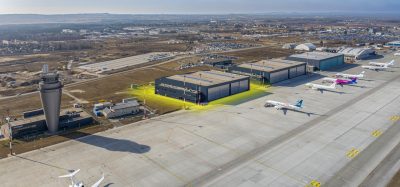
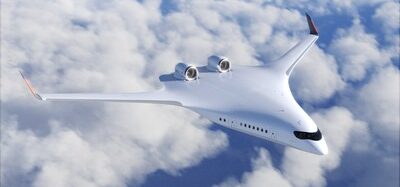












The strength and resilience of the people who have maintained Land Over Landings is amazing. They will not give up fighting for the proper use of the expropriated lands! Farmland adjacent to the Rouge Park, is a win, win scenario.
An unnecessary airport as a constant reminder of the lives that were adversely changed, next to the Rouge Park, close to a nuclear power plant, and with an ever expanding Pearson Airport, just more emissions and noise. Food producing farms next to Toronto make more sense than an attempt to justify a bad decision made years ago!!
Thank you for publishing this well articulated article. This is an opportunity for our government to show its good sense and lead the way in taking the high road. We must look to a sustainable plan for our children and our children’s children. We can be inventive with the treasure of this wonderful gift of land. How wonderful to have this opportunity.
It’s time to hit DELETE on this project and listen to the people but turning this land to a food bank for the GTA.
Food security is an emerging issue in today’s world. Write your local MP and ask them to add these Federal Lands into the Rouge National Urban Park. Help create a food hub that is a step towards providing greater food security for Canada’s largest urban area.
This seems to be a one sided largely emotion driven debate
Very few facts supporting either side are being discussed, just airport bad farms good.
Let’s talk about some positives for an airport
Right now the distance from a proposed pickering airport to Pearson is aprox 50 km
Round trip 100 km
Average fuel consumption for light vechicles is a proxy 11 liters per 100 km
So every Passangers getting on a plane at pearson from durham burns approx 11 liters of unnecessary fuel and adds to traffic congestion just to get on a plane.
Very environmentally unfriendly.
Next, we all speak of how farming is good for the environment.
Scientific American recently published the following about just how damaging agricultural runoff is to the environment and watershed.
https://www.scientificamerican.com/article/fertilizer-runoff-overwhelms-streams/
It is time rational thought was brought to this debate and less political posturing.
A new airport could bring g huge economic benefits and many industries follow efficient transportation.
Also there would be environmental benefits and reduction in congestion.
Air travel is getting more efficient and environmentaly friendly every year.
Just remember how much fun your last 3 hour trip through pearson airport was.
Starting a farm is no easy task. Just ask the people who’s pioneer forefathers who did start farming here. Government will have to build/restore buildings, barns, houses, out buildings to get people to live there. Government will need to find people willing to start a career in agriculture as there has been generations of up and coming farmers leaving as a result of expropriation. The cost of physically and mechanical equipping the farms with modern and efficient equipment is very high. I don’t think it can happen. The land should be returned to the families if it not going to be used for an airport. The government should no profit on this land as it was taken with the promises of providing many economic benefits for our youth and future of the area. Only dictatorships and communist counties do those sorts of things and to this point the whole program is a social injustice.
This is a classic “pay for play piece”, and where did they get the money? Humm… living on heavily subsidized land worth billions, helping a multi billion dollar monopoly called Pearson Airport make money with each year the Pickering airport is delayed , this is Canadian politics at its worst.
The Pickering lands are set aside to future proof our airport system, not to provide a rural lifestyle choice for a chosen few, 30 minutes from downtown Toronto.
I have watched this unfold from the begging, if fact a couple of pals rented one of the houses for a couple of years in the late 70s, thanks for the great party house! Federal and or Provicial governments.
I currently reside is South Ajax and call only say that I verified the anticipated flight paths and I am happy to announce I am right in line and underneath one of the them.
Woo Hoo to that!
Once I learned that the main reason for the airport to be built in the first place, is for cargo and not passengers!
Really, Really.
I think Pearson will do just fine for what we have going on now and for the future, unless our population triples? I don’t see that happening, but we just elect our government, we certainly don’t control it, once they are elected.
At this point, I say abolish the airport, sell the land and move on, take your losses as you always do. No sweat, it’s only the taxpayers that will cover this. (Oh that might be me?)
It’s just common sense to know this, if we have not needed the airport for 40 plus years, we want to seriously think about putting a shovel in the ground now.
Or maybe you could build it with taxpayer’s money, the sell it to private investors for profit and share the revenues with us, the taxpayer.
Just like the case with Hwy 407, is that not what happened? Correct me if I am wrong?
Well not in my backyard syndrome is alive and well in the Pickering area. But there is no reservation for the “Pickerings” to go to Pearson and hop on a plane for a vacation. The “Pickerings” are all for the near misses at Pearson due to overcapacity. The “Pickerings” are all for other communities in the west to live under noisy flight paths as long as they don’t have to share in the noise. The “Pickerings” are an example of hypocrisy at its best or should I say its worst.
If we are preserving the land for farmland, then there is pollution from farmland too, if we are preserving for natural habitat why does it all need to be in this neck of the woods. Why not build an airport that will be state of the art, why not get headquarters next to this airport, why does peoples peace and quiet have to be in this neck of the woods, stop with the indecision and build the airport, stop holding back Durham for a few farm folk
If after looking at all the congestion you suggest we don’t need a airport you are wrong. We are making do with one airport we will be better off with 2. How many does New York have or Los Angeles or Chicago if we are going to compete we need to move to a 2 airport
I am a “Pickering” and I can tell you that we too are impacted by Pearson flights flying east and west AND flights to/from Oshawa airport. Double whammy for us. I am in fact under a jet path and it is horrible to have to listen to these low flying planes every couple of minutes and smelling the jet fuel they leave behind. Yet you are saying us “Pickerings” are hypocritical because we don’t want an airport in our backyard? Do people who live in the West end think that the Pickering airport will resolve the noise issues and reduce the number of planes flying in/out of Pearson? Very doubtful. With all of this climate change/environmental concerns and the Canadian government saddling us with a carbon tax people think it’s actually a good idea to have another airport in the GTA contributing to greenhouse emissions? I think I prefer open fields, farmlands etc. over another airport….